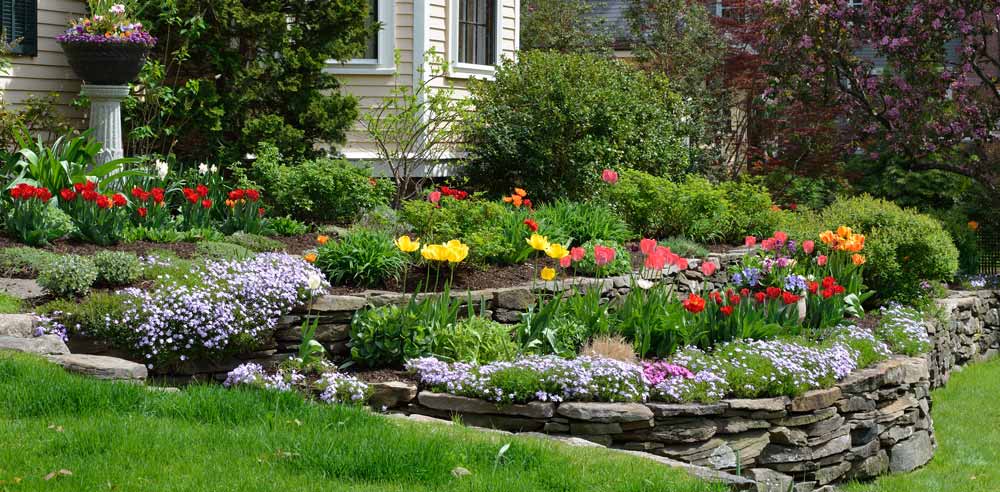Your grounds will probably not be perfectly flat. This does not have to be to the detriment of your garden though.
Many owners of large gardens dread mowing sloped lawns or dealing with gradients. It does not have to be this way. On the contrary, the natural terrain of a garden is a tremendous asset if it is used in a positive manner. Whatever your preference, Gardens Revived are here to help you make the most of your garden terrain.

The natural approach
By embracing the existing contours of the site, you can add structures such as a water feature or steps, or you can take advantage of a south-facing or north-facing slope to catch the sun, or create a cooler sanctuary from the heat. By working with the terrain rather than against it, you save expense and upheaval, and help make your garden space both unique and in tune with nature. It is also important to consider that significant groundworking usually requires planning permission, and the related expense and bureaucracy that entails.
Terracing
If a slope is quite dramatic, terracing can create level platforms or steps along sloped terrain to create a more usable garden space, prevent soil erosion, and enhance water retention. Terraces can be constructed using retaining walls, boulders, or timber structures and planted with a variety of vegetation to soften the transitions between levels.
Using the sun
We always recommend to select plants that are well-suited to the existing contours and microclimates of the site, taking into account factors such as sun exposure, soil moisture, and drainage conditions. Choose plant species with varying heights, textures, and colours will create depth and dimension within the garden. In a south-facing suntrap, you also have the opportunity to grow species that may not usually thrive in a British climate. Palm trees, once only found in resorts like Torquay in the UK, are now much easier to grow successfully where garden designers fully take advantage of the ground topography.
Making a gradient yourself
If your garden feels too flat and you wish to give it three dimensions you can achieve this with responsible groundworking. This also applies to making a sloped terrain more even. In both instances it is important to bear in mind water run-off, drainage, and the effect this may have on surrounding properties. Creating gentle slopes and textures though will usually have minimal impact, and create a superb focal point to the garden.
Enhancing the natural beauty of your garden
You can also use curved pathways, borders, and plantings to follow the natural contours of the land, creating organic flow and movement within the garden. Curved lines soften the visual impact of abrupt changes in elevation and create a sense of rhythm and unity throughout the landscape. A gradient also provides the opportunity to create a cascading water feature into the garden, or even a river. This can cool the garden significantly during the height of summer, which has been in much higher demand after recent heatwaves.
If you would like to have a chat about how to best make use of your garden terrain, give our team a call on 07939 619 537.
Gardening Services Gallery / Testimonials